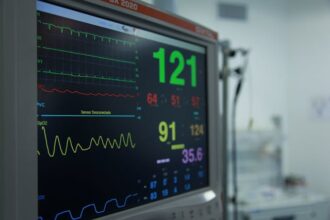A recent study published in the journal Advanced Science has brought significant insights into the mechanisms underlying neurodegenerative diseases such as Parkinson’s disease, which are often associated with protein aggregation. Contrary to the long-held belief that liquid-liquid phase separation is a precursor to the formation of amyloid fibrils—a pathological hallmark of Parkinson’s—the study suggests that forming protein into liquid droplets might play a protective role in dissolving aggregated proteins. This finding could potentially open new avenues for the development of therapeutic interventions.
The phenomenon of liquid-liquid phase separation is not new and has been observed in everyday life, such as when oil droplets form after vinegar is added to oil and shaken. However, its implications in cellular biology have only recently become a hot research topic. The discovery that protein molecules can condense into droplets isolated from the cell’s cytoplasm was groundbreaking. In biological contexts like that of roundworm embryos, it was observed that proteins and RNA could form tiny droplets that assist in managing genetic material during early growth stages. This discovery shifted the paradigm of cellular biology, suggesting that such droplets, optimised by evolution, could serve highly functional roles in cells, allowing for the compartmentalisation of molecules and regulation of biochemical reactions.
The role of these droplets has been a subject of interest not only for their functionality but also for their potential implication in diseases. Neurodegenerative diseases, in particular, where protein aggregates are common, have previously been thought to have a connection with these droplets. It was hypothesised that droplets might concentrate proteins to a point where they begin aggregating. This theory was supported by numerous observations where conditions like salt concentration or pH seemed to promote both protein aggregation and condensation. However, the exact relationship between these two phenomena remained unclear until now.
In what is described as the most comprehensive exploration yet of the relationship between aggregation and liquid-liquid phase separation, researchers led by the Paul Scherrer Institute PSI conducted an extensive study on the protein alpha-synuclein (ɑSyn), known for its tendency to clump together to form amyloid fibrils in Parkinson’s disease. The researchers meticulously investigated the behaviour of ɑSyn under over five hundred different conditions varying in protein concentration, salt concentration, and the presence of crowding agents. They monitored the droplet formation and aggregation progression over up to four months using light microscopy.
The research team, including PSI postdoctoral researcher Rebecca Sternke-Hoffmann and PSI scientist Jinghui Luo, utilised the robotic crystallisation facility at the Swiss Light Source SLS, typically employed for preparing protein crystals for X-ray crystallography. Their investigations revealed distinct conditions favouring stable droplets and those promoting protein aggregation. Contrary to the conventional theory that aggregates originate from droplets, their findings indicated that droplets and aggregates form independently under various conditions. Remarkably, in some instances, what were considered irreversible fibrils transformed back into droplets over time, suggesting a functional role for liquid droplets in preventing the formation of solid aggregates.
The researchers complemented their macroscopic observations with small-angle X-ray scattering (SAXS) measurements and simulations, providing insights into the molecular interactions underpinning the observed phenomena. They found that aggregation was primarily driven by interactions between the tails of individual protein molecules, whereas liquid-liquid phase separation resulted from interactions among different protein molecules.
This research deepens our understanding of the cellular processes and reshapes our approach to neurodegenerative diseases associated with protein aggregation, such as Alzheimer’s, Huntington’s, and Creutzfeldt-Jakob disease. By demonstrating that protein droplets do not necessarily lead to harmful aggregation but may help mitigate it, this study paves the way for potentially groundbreaking therapeutic strategies targeting these diseases.
More information: Rebecca Sternke-Hoffmann et al, Phase Separation and Aggregation of α-Synuclein Diverge at Different Salt Conditions, Advanced Science. DOI: 10.1002/advs.202308279
Journal information: Advanced Science Provided by Paul Scherrer Institute








